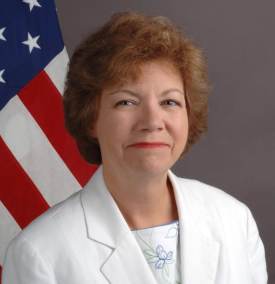KP Chair: Need to Update Core Definition of "Conflict Diamonds"
November 13, 12
(IDEX Online News) – After a Kimberley Process (KP) committee decided not to endorse change to the definition of Conflict Diamonds, further calls have been made by the chair of KP, Ambassador Gillian Milovanovic, to update the definition.
 KP Chair Ambassador Gillian Milovanovic |
Speaking at the Zimbabwe Diamond Conference 2012 in Victoria Falls, Ambassador Milovanovic said that it must be asked if the KP certificate still provides the assurances that consumers want. “Are we, as you sit here today, sufficiently confident that we are investing adequately in the future of the Kimberley Process?” she asked before saying that the KP needs to do more.
“Consumers are – or will be – looking for more; and that the core definition of "conflict diamond" therefore needs to be updated as our own investment in the KP's future as a modern and relevant system of certification, just as other industries are doing as we speak.”
KP certificates are not, she stressed, designed to address human rights, financial transparency, economic development, or other important questions though they clearly impact the diamond sector.
Additional certification should apply only to armed conflict and/or armed violence that is demonstrably related to rough diamonds, not to isolated incidents, or to circumstances in which an armed conflict is unrelated to the diamond sector.
Milovanovic added that KP-safeguards should be implemented on a site-by-site basis, consistent with systems for other conflict minerals, such as that undertaken within Africa by the International Conference on the Great Lakes Region. Today KP is country based.
Although she said that the U.S. proposal to change the definition contains the above elements, she stressed that it works exclusively through existing KP processes, calling the proposal “a starting point, not a take-it-or-leave-it proposition.”
In his speech to the assembly, World Diamond Congress (WDC) president Eli Izhakoff said that the WDC insists that the expanded definition be carefully considered, with all parties consulted and that a decision be arrived through consensus. “Most importantly, it needs to be specific, be directly associated with diamond production, and be something that we are able to implement within the context of our existing structure,” he said.
Izhakoff emphasized that the purpose of the Kimberley Process is “to defend the diamond pipeline so that the diamond business will serve the legitimate interest of all its stakeholders. It should never become a tool to advance the narrow political interests of one group or another.”